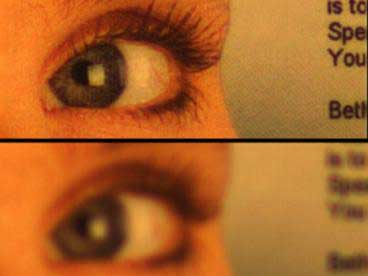Members of the Graphics Group at MIT in Cambridge, Massachusetts have demonstrated that combining several low-quality exposures with different focal depths can yield a sharper photo than a single, higher-quality exposure.
Working with MIT professors Fredo Durand and William Freeman, and Kiriakos Kutulakos of the University of Toronto, MIT’s Dr Sam Hasinoff devised a mathematical model that determines how many exposures will yield the sharpest image given a time limit, a focal distance and a light-meter reading.
Hasinoff said that experiments in the lab, where the number and duration of digital camera exposures were controlled by laptop, bore out the model’s predictions.
A digital camera could easily store a table that specifies the ideal number of exposures for any set of circumstances, said Hasinoff, and the camera could have a distinct operational setting that invokes the table. The multiple-exposure approach, he added, offers particular advantages in low light, or when the scene covers a large range of distances.
For the time being, however, the technique is limited by the speed of camera sensors.
Today’s fastest consumer cameras can capture about 60 images in a second, said Hasinoff. If the MIT researchers’ model determined that, under certain conditions, the ideal number of exposures in a tenth of a second would be eight, the fastest cameras today could manage only six.
‘But there’s still a big gain to be had,’ added Hasinoff.

In the image on the bottom, the eye is in the foreground and the text is in the background - and both are blurry because the photographer has focused on a point between the two. A new MIT system instead captures multiple images at several focal depths and stitches them into a sharper composite (top). Courtesy Sam Hasinoff




Red Bull makes hydrogen fuel cell play with AVL
Formula 1 is an anachronistic anomaly where its only cutting edge is in engine development. The rules prohibit any real innovation and there would be...